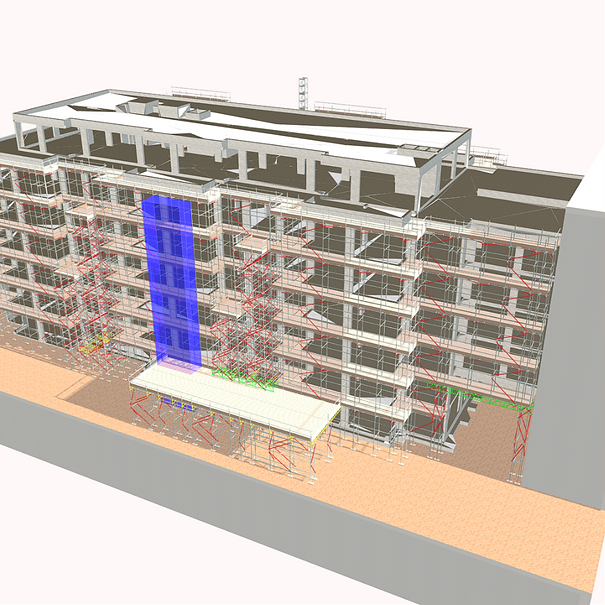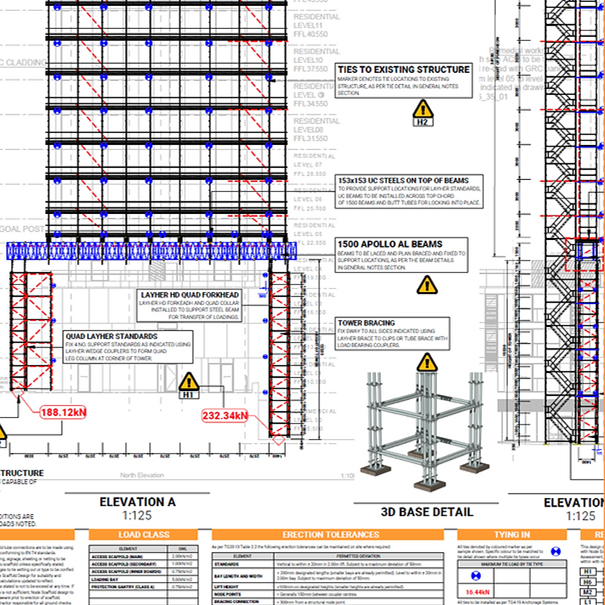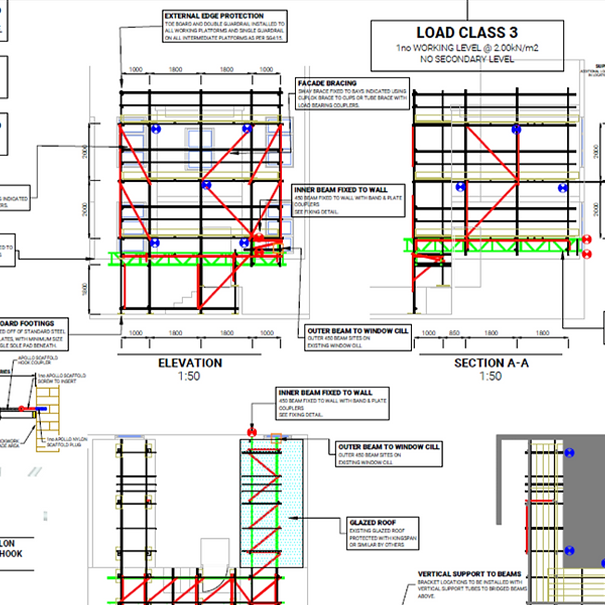


When is scaffold design required?
Scaffold design is a critical part of safe construction and a key component of the Temporary Works process. While TG20:21 offers comprehensive guidance for standard scaffolding in the UK, not every scaffold falls within its compliance range. That’s where bespoke scaffold design becomes essential.
In many construction projects across the UK and Ireland, scaffold design is required when a scaffold can’t be built using standard TG20:21 compliance sheets. This could be due to unusual site conditions, non-typical loading, or specific access requirements. A tailored design ensures the scaffold is safe, structurally sound, and fit for purpose.
TG20:21 outlines when a scaffold can be considered compliant without a formal design—but also clearly shows when a project demands full scaffold design input. This includes design checks for load capacity, tie configurations, material use, and overall stability.
Common examples where bespoke scaffold design is required include:
- Façade retention scaffolds
- Temporary roofs and weather protection structures
- Freestanding scaffold towers or frames
- Pavement gantries and public access protection
All these scenarios require a qualified scaffold designer to assess the structure, calculate loading, and ensure stability under real site conditions. Whether it’s a city centre project in London or a remote site in Ireland, the same design principles apply.
At Node, we provide scaffold design services across London, the UK, and Ireland. Our team works closely with scaffold contractors, main contractors, and site managers to deliver safe, practical scaffold design solutions—even on complex or high-risk projects.
If you’re unsure whether scaffold design is required for your project, get in touch. We’ll help you review your needs and support you in meeting Temporary Works requirements.
Let’s Keep in Touch with Us!
Contact us today to explore the possibilities of our dynamic co-working space. Your ideal workspace is just a message or call away with us.
- 020 3488 0882
- info@nodegroup.co.uk
- Second Floor, Saxon House, 182 Hoe Street, London, E17 4QH
